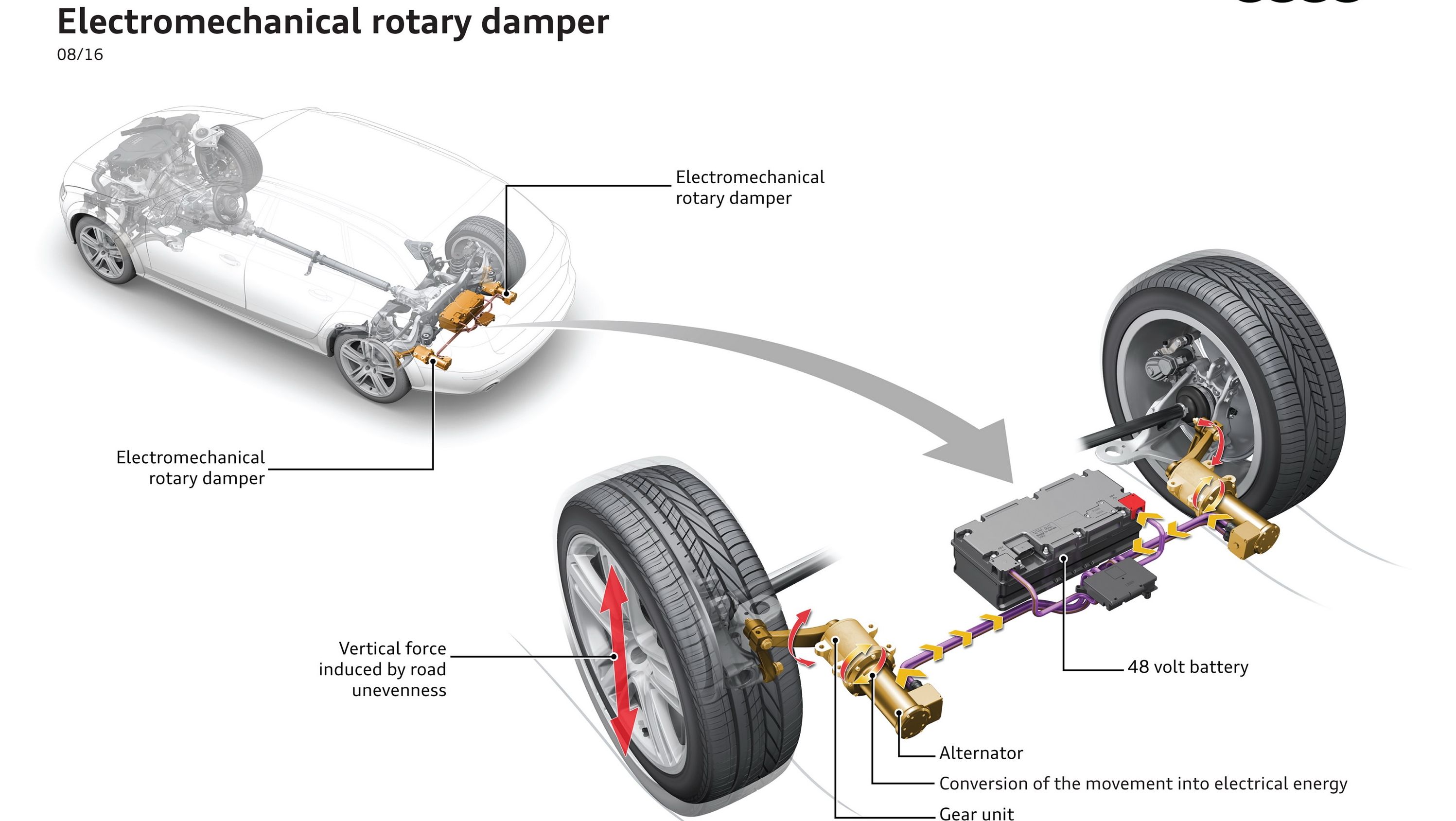Car electrification isn’t something that is going to go away. In fact, it’s something automakers are striving to increase on a wide scale every day. See, we’re actually working against ourselves when you really think about it. As our technology evolves so does our demand for power, which is a serious problem when it comes to electrification of cars. To put it simply, the more electronics, the more power is used, and ultimately, the fewer all-electric miles we can travel with an electrified vehicle. So, we need to come up with new innovations and solutions to help store energy more efficiently and recuperate energy that is lost during braking and other scenarios. The latest company to come up with a breakthrough in energy recuperation is Audi with its “eROT” system.
eROT is basically an electrical suspension system that uses electric motors and electrical dampers (shocks) to absorb energy as our cars travel over bumps and holes in the road. With the traditional, hydraulic dampers used on cars today, the energy from bumps and potholes is converted to heat and dispersed by the metal housing of the damper itself. But, eROT, uses a combination of electric motors and a 48-volt electrical system to absorb the energy and turn it into electrical power.
Stephen Knirsch, Board Member for Technical Development at Audi AG, said, “With the new electromechanical damper system in the 48-volt electrical system, we put this energy to use. It also presents us and our customers with entirely new possibilities for adjusting the suspension.”
There are multiple benefits to the eROT system. First, the unique mounting of the system allows for more cargo room in the rear, plus the eROT system is actively controlled. This means it adapts to irregularities in the road as well as the driver's specific driving style to supply the best ride possible. According to Audi, the average rate of recuperation during testing thus far comes in at an average of 100 to 150 watts. Freshly paved highway offers the least – around 3 watts – while rough secondary roads can increase recuperation up to as much as 613 watts. The system's current configuration includes a 0.5-kilowatt hour lithium ion battery that has a peak output of 13 kilowatts. The energy is then passed through a DC Converter which drops the voltage down to be passed into the 12-volt primary electrical system.
Continue reading for the full story.
Why it matters
At this point, the eROT system is still in the prototype stages, but Audi has seen pretty spectacular results so far. It’s certainly plausible that we could see this system move into production and eventually into various Audi models. The most important thing about the system is that 48-volt electrical system, which is the foundation of Audi’s electrification strategy anyway.
By 2017, Audi will be testing this system on a model with a 48-volt primary system (as opposed to the 12-volt system in most cars today) with the eROT system supplying power to a high-performance mild hybrid drive system. Audi claims that the system can offer a fuel savings of 0.7 liters per 100 kilometers, however, we’ll hold judgment of that one until we see some real world testing results.

